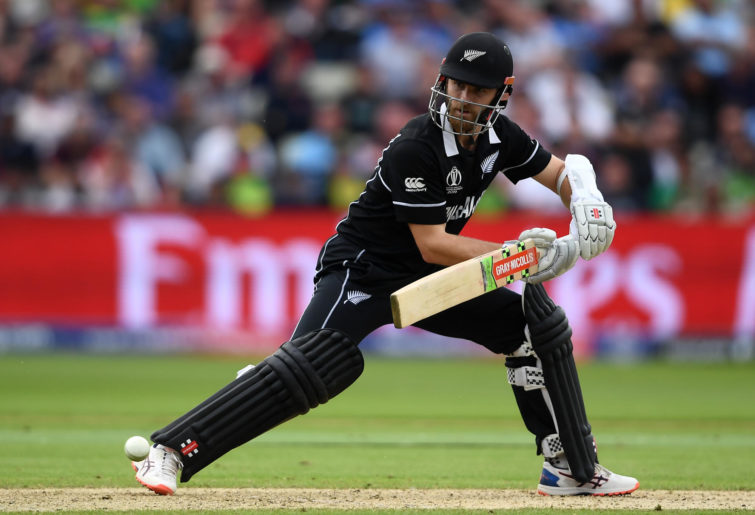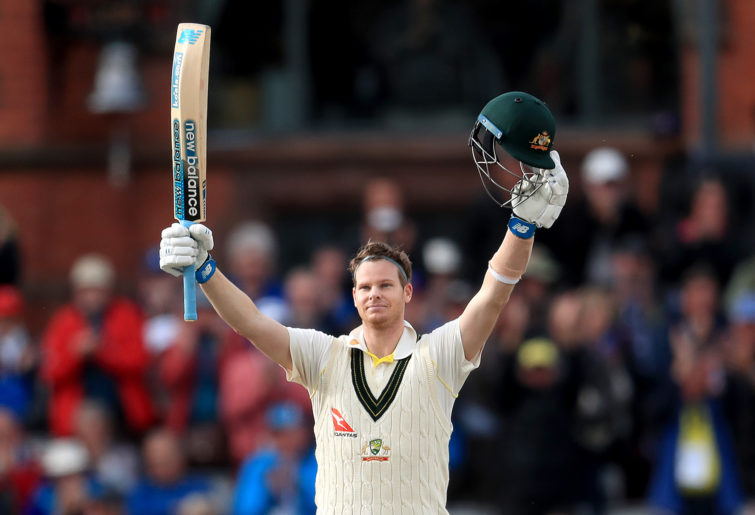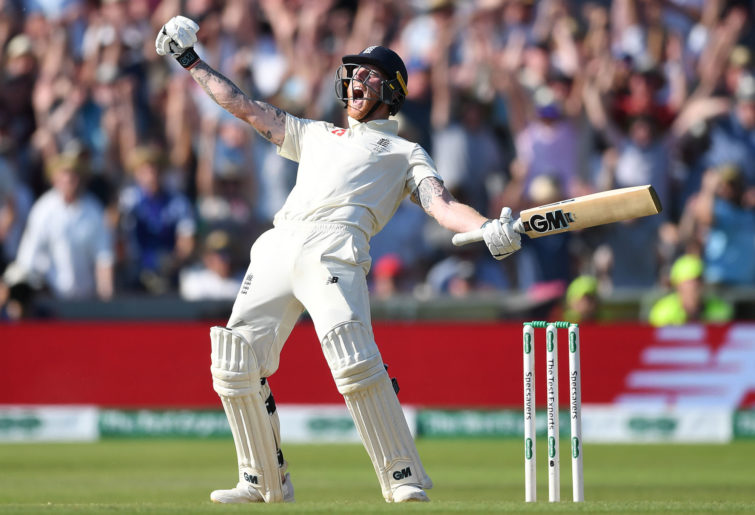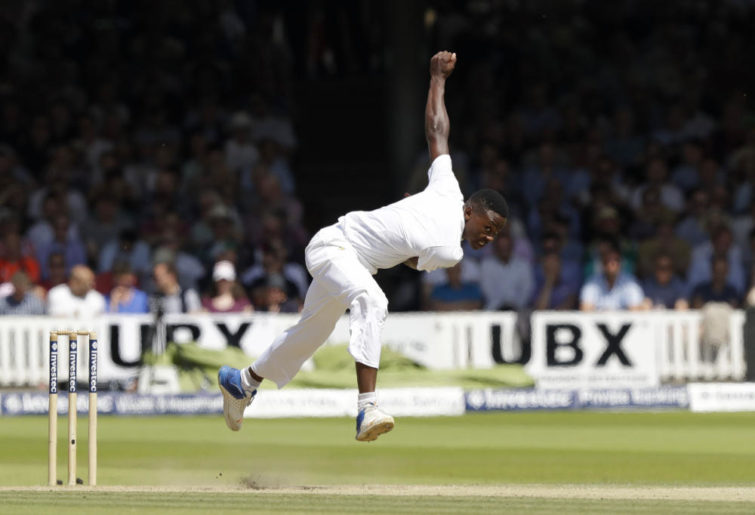As the sporting world takes a break in the middle of a global pandemic, sports lovers are finding other ways to pursue their passion; reliving classic matches, hypothesising about makeshift season details and constructing hypothetical line-ups.
From a cricket perspective, the ultimate hypothetical line-up is the world XI. The ICC names a team of the year every calendar year, and the concept of a world XI has been pursued in the past, with an ODI side put together to take on Australia.
This article will select the current Test world XI, but with a twist. Only one player can be selected from each nation.
The concept has inherent challenges. Many star players will be overlooked for an equally successful teammate, and sometimes a country’s best player will miss out in the name of team balance. So for what it’s worth, here is the current Test world XI.
Azhar Ali (Pakistan): 78 Tests, 5919 runs at 42.58, 16 centuries
Whilst the majority of Azhar Ali’s 78 Tests have been spent at number three, he opens the batting in this side given the plethora of middle-order options available.
The Pakistani captain has opened the batting on 37 occasions in Test cricket, averaging 45.76 in the position, with four centuries, including his top score of 302 not out.
In addition to his triple century, Azhar has two double hundreds, and two scores of 157 in Test cricket, reflecting his ability to play long innings – the hallmark of a good Test opener.
He provides an experienced option at the top of the order, having compiled a strong record over a number of years.
Dimuth Karunaratne (Sri Lanka): 66 Tests, 4524 runs at 36.78, nine centuries
Sri Lanka’s current Test Captain Dimuth Karunaratne takes the second opening position, having performed consistently at the top of the order at Test level.
Karunaratne has been one of his country’s best batsman in recent years, scoring 527 runs at 35.13 in the 2019 calendar year, 743 runs at 46.43 in 2018 and 1031 runs at 39.65 in 2017.
While many top batsmen struggle on deteriorating pitches, Karunaratne averages 38.01 in the second innings with five centuries. Indeed, he is the only batsmen in this team to average more in the second innings than the first.
Regarded as a leader within Sri Lankan cricket, the left-handed opener was made captain of Sri Lanka’s ODI side last year, despite not having played the format internationally for four years.
Kane Williamson (captain, New Zealand): 80 Tests, 6476 runs at 50.99, 21 centuries
Coming in at number three is New Zealand’s captain, Kane Williamson. A genuine star of global cricket, Williamson ranked fourth in the ICC Test batting rankings.

(Photo by Alex Davidson/Getty Images)
The New Zealander has averaged over 50 in all but one of his last six completed calendar years, falling short in 2016 when he averaged 47.06.
Williamson is renowned as a humble leader, with a calm temperament, and has led his team to 18 wins in his 32 matches in charge with just six losses.
He averages 54.2 as captain with eight centuries and has been chosen to lead this side.
Steve Smith (Australia): 73 Tests, 7227 runs at 62.84, 26 centuries
Unsurprisingly, the world number one Test batsman Steve Smith represents Australia, having averaged 73.42 since his return from a year-long suspension.
Smith’s ability to maintain an average above 60 is virtually unrivalled in the modern game, with others who have achieved the feat doing so in a much smaller sample size.
The former Australian captain is considered by many to be the best since Don Bradman, and played a pivotal role in Australia retaining the Ashes last year, scoring 774 runs at 110.57 with three centuries.
In an era where Australia has struggled in overseas conditions, Smith has averaged 60 in India and 59.55 in England. In fact, Bangladesh is the only country where he averages below 40; a place where he has played just two Tests.

(Mike Egerton/PA Images via Getty Images)
Virat Kohli (India): 86 Tests, 7240 runs at 53.62, 27 centuries
Another self-explanatory selection is that of Virat Kohli, who has performed with distinction from the very beginning of his Test career.
Kohli debuted in 2011, averaged 49.21 in 2012, and hasn’t averaged under 40 in a completed calendar year since.
Indeed, of the ten years in which Kohli has played Test cricket, he has scored multiple centuries in eight of them, reflecting a remarkable consistency across the best part of a decade. He has multiple centuries against every opponent and has scored hundreds in every country except Bangladesh, where he has only played one Test.
Whilst Kohli prefers to bat at number four, the Indian captain has been pushed down to number five in this star-studded team.
Ben Stokes (England): 63 Tests, 4056 runs at 36.54, nine centuries. 147 wickets at 32.68
Ben Stokes has always been a valuable cricketer. He’s a match-winner, capable of pulling off an extraordinary innings, and he is able to contribute with both bat and ball.
In 2019 however, Stokes took his game to another level, finding greater consistency with the bat. After averaging 26.85 in his ten Tests in 2018, the all-rounder averaged 45.61 in 2019, and has averaged 53.8 in three Tests so far this year.
A naturally gifted hitter, Stokes is remarkably adaptable, able to bat slowly when required. His remarkable performance to claim victory in the Headingley Ashes Test was a testament to this, as he batted slowly on Day 4 before hitting eight sixes in an innings of 135 not out.
Stokes has been selected as an all-rounder ahead of a sixth specialist batsman given the quality of this team’s top five. He performs the fifth bowler role well, having taken 147 wickets in his 63 Tests with a bowling average in the low 30s.

(Photo by Gareth Copley/Getty Images)
Mushfiqur Rahim (wk, Bangladesh): 70 Tests, 4413 runs at 36.77, seven centuries. 104 catches, 15 stumpings
In the absence of the suspended Shakib al-Hasan, wicketkeeper-batsman Mushfiqur Rahim is the best man to represent Bangladesh in this side.
Now playing as a specialist batsman, Rahim has spent considerable time behind the stumps at Test level, keeping in 55 of his 70 Tests.
An accomplished batsman with seven Test centuries, including three doubles, the Bangladesh keeper has averaged 37 when wearing the gloves in Test cricket – marginally higher than his overall Test average.
With many selecting Rahim to keep in their Test team of the decade, he comfortably earns a place in the world XI.
Jason Holder (West Indies): 40 Tests, 1898 runs at 32.72, three centuries. 106 wickets at 26.37
The world’s number one ranked Test all-rounder, Jason Holder, comes in at number eight.
Handed the captaincy after just eight Tests, Holder has been a revelation for the West Indies, performing with bat and ball in an otherwise unstable side.
Whilst he took some time to settle into the captaincy, Holder’s last two years have been fantastic. He averaged 37.33 in 2018 with the bat, and 49.14 in 2019, headlined by an unbeaten score of 202 against England.
After an indifferent start to his Test career with the ball, the West Indian has taken 53 wickets at 14.23 in his last 11 Tests, placing him among the premier seam bowlers in world cricket.
Rashid Khan (Afghanistan): Four Tests, 23 wickets at 21.08
The world’s best T20 bowler, Rashid Khan remains relatively unproven at Test level with only eight first-class matches to his name.
However, in the limited opportunities he has had so far, the Afghan spinner has performed well, taking 23 wickets in just four Tests.
Concerningly, Khan struggled in Tests against India and the West Indies, with the majority of his wickets coming against comparatively weak sides in Ireland and Bangladesh. But with such a small sample size, it’s hard to be too critical.
Whilst he may be a somewhat speculative pick, given his bowling style is heavily oriented towards the white-ball game, Rashid’s bright start to his Test career rewards him with a position ahead of his Afghani teammates.
Tim Murtagh (Ireland): Three Tests, 13 wickets at 16.38
Irish veteran Tim Murtagh earns his place in the side, having taken 13 wickets in his first three Test matches.
Murtagh tore England apart at Lord’s last July, taking 5/13 in the first innings as England were bowled out for just 85.
While his side may be new to Test cricket, Murtagh is an experienced cricketer, having played 180 first-class matches for Middlesex, taking 695 wickets at 24.12.
Whilst he may not be required at number 10, the Irish seamer also offers a handy option with the bat, averaging 18.95 at the first-class level with 11 50s.
Kagiso Rabada (South Africa): 43 Tests, 197 wickets at 22.95
At the age of just 24, Kagiso Rabada is already nearing 200 Test wickets at an exceptional average of 22.95.

(AP Photo/Matt Dunham)
Entering his sixth year of international cricket, the South African speedster has taken over 50 wickets in two separate calendar years, claiming 57 in 2017 and 52 in 2018.
In 2018, Rabada became the youngest player to reach number one in the ICC Test bowling rankings. He was also the youngest player to reach 100 Test wickets.
With the retirements of legendary compatriots in recent years, Rabada is now the clear leader of South Africa’s bowling attack, using a combination of skill, pace and an aggressive demeanour to unsettle opponents.

































































































